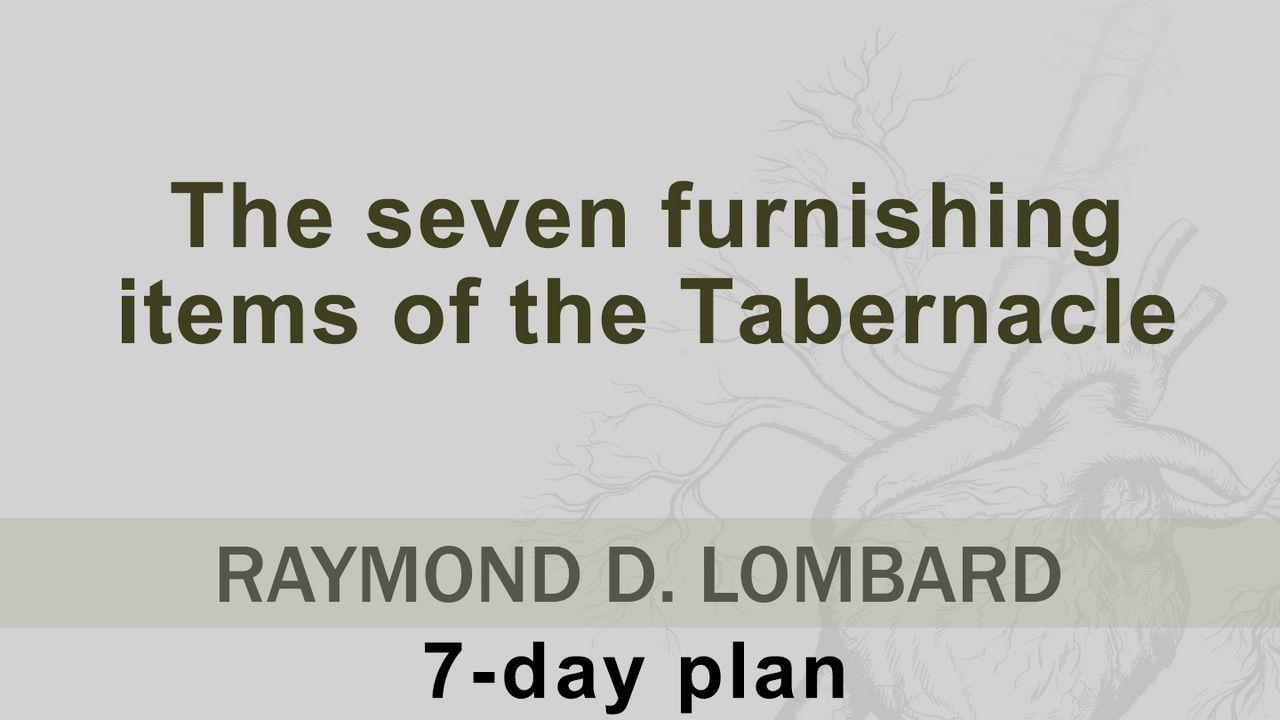The Seven Furnishing Items Of The Tabernacle预览

THE LAVER
The second item that we encounter is the laver. After the priest had made the sacrifice on the altar of burnt offering, he moved on to the laver to cleanse himself before he was ready to enter the tabernacle. This was a strict command of the Lord as recorded in Exodus 30:17-21; 38:8.
The laver and its base were made from polished bronze mirrors, which the Jewish women took from the Egyptian women at the time of the exodus out of Egypt (Exod. 38:8). The laver was filled with water.
As is the case with the bronze bases of the pillars and the brazen altar, bronze speaks of Divine judgement. By looking into the mirror the priest could evaluate his outward appearance. The laver is one of the indispensable objects when approaching God to have communion with him in the sanctuary. We read that Aaron and his sons could wash their hands and feet with water out of it before they could enter the tent of meeting, so that they did not die. It was a divine declaration that no uncleanness would be allowed in the holy presence of God. We see that the purpose of the laver is to make the priests fit for communion and service in the Holy Place.
Typologically we are not dealing with the guilt of sin, which has been dealt with at the altar, but rather with the inner uncleanness in the life of the child of God.
The priests had to go to the laver of polished mirrors to wash themselves - they were therefore forced to look into the mirrors to evaluate their appearance. The mirrors in the Bible symbolise the written Word of God through which the believer evaluates himself: But be doers of the word, and not hearers only, deceiving yourselves. For if anyone is a hearer of the word and not a doer, he is like a man observing his natural face in a mirror; for he observes himself, goes away, and immediately forgets what kind of man he was. But he who looks into the perfect law of liberty and continues in it, and is not a forgetful hearer but a doer of the work, this one will be blessed in what he does. (James 1:23-25). What is the purpose of a laver without water? If the laver refers to the written word, then the water in the basin undoubtedly refers to the Holy Spirit (John 7:38, 39). It is the Holy Spirit, through the efforts of the Word, that leads us in the truth (the Word - John 17:17). We must remember that the water is an image of the Word, for we read in Ephesians 5:26 that Christ: might sanctify and cleanse her (the Church) with the washing of water by the word.
Aaron and his sons were earnestly admonished to wash their hands and feet in the laver so that they would not die. Therefore, before any work was undertaken in the Holy Place, cleansing had to take place. The hands and feet naturally speak about the everyday living and walking in this sinful world. So should we, as God's priesthood today (1 Pet. 2:5, 9), cleanse ourselves daily through the utilisation and application of the Word and the cleansing work of the Holy Spirit (John 15:3). Jesus says it like this in John 13:10: He who is bathed (bathed or regeneration [Tit 3:5]) needs only to wash (cleanse – 1 John 1:9; 2:1) his feet (or the sins of our daily walk) but is completely clean; and you are clean. . .
So we need to see the process of sanctification in the daily cleansing of hands and feet, - our part of it. Therefore, having these promises, beloved, let us cleanse ourselves from all filthiness of the flesh and spirit, perfecting holiness in the fear of God (2 Cor. 7:1). We also read in Paul's exhortation to the church in Thessalonica: For God did not call us to uncleanness, but in holiness. Therefore he who rejects this does not reject man, but God, who has also given us His Holy Spirit (1 Thess. 4:7, 8). The message of the laver speaks clearly and distinctly to the child of God in James 1:21: Therefore lay aside all filthiness and overflow of wickedness, and receive with meekness the implanted word, which is able to save your souls. If we want to enter the holy place of God where Christ is now, the Scriptures leave us no doubt as to the way in which we should seek access: Therefore, brethren, having boldness to enter the Holiest by the blood of Jesus, by a new and living way which He consecrated for us, through the veil, that is, His flesh, and having a High Priest over the house of God, let us draw near with a true heart in full assurance of faith, having our hearts sprinkled from an evil conscience and our bodies washed with pure water. (Heb. 10:19-22).
In summary we can say that it is not the laver first and then the brazen altar, but first the altar and then the laver. Put differently:
- The altar proclaims the message of justification.
- The laver proclaims the message of sanctification.
- At the altar we hear: without the shedding of blood there is no forgiveness. At the laver we hear: that without sanctification no one will see God (Heb. 12:14).
- At the altar we hear Jesus say: "I have come that you might have life." By the laver we hear: "I have come that you may have abundant life."
- At the altar we hear: If we confess our sins, He is faithful and just to forgive us our sins. At the laver we hear: He is faithful and just to cleanse us from all unrighteousness.
- A repentant sinner stands at the altar, crying: O God, be merciful to me a sinner. At the laver the believer cries out: O God, create in me a clean heart (Psalm 51:10).
We are not firstly cleansed of our sins so that we may go to the cross for the atonement of our sins. We firstly go to the cross to receive atonement for our sins, and then forgiveness for our daily transgressions and sins.
读经计划介绍

We find two things in the outer court, which we can give attention to, namely, the brazen altar and the laver. Altogether there were seven items, or pieces, of furniture regarding the tabernacle. Two were in the outer court, three in the Holy place and two in the Holy of Holies. We will look at all 7 pieces in this study.
More

